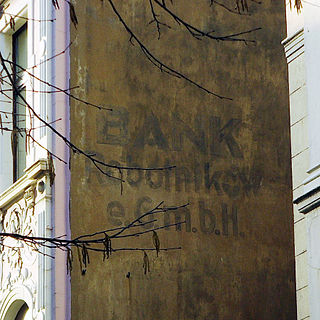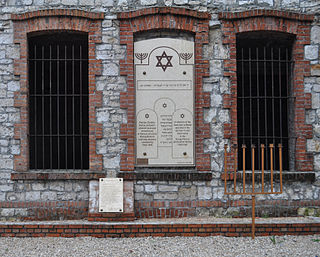
Leipzig is the most populous city in the German state of Saxony. The city has a population of 628,718 inhabitants as of 2023. It is the eighth most populous city in Germany. The name of the city and those of many of its districts are of Slavic origin.

Markkleeberg is an affluent suburb of Leipzig, located in the Leipzig district of the Free State of Saxony, Germany. The river Pleiße runs through the city, which borders Leipzig to the north and to the west.

Ruhrpolen is a German umbrella term for the Polish migrants and their descendants who lived in the Ruhr area in western Germany since the 19th century. The Poles migrated to the rapidly industrializing region from Polish-speaking areas of the German Empire.

HASAG was a German metal goods manufacturer founded in 1863. Based in Leipzig, it grew from a small business making lamps and other small metal products by hand into a large factory and publicly traded company that sold its wares in several countries. During the Second World War, Hasag became a Nazi arms-manufacturing conglomerate with dozens of factories across German-occupied Europe using slave labour on a massive scale. Tens of thousands of Jews from Poland, and other prisoners, died producing munition for Hasag.
The following is a timeline of the history of the city of Cologne, Germany.
The following is a timeline of the history of Düsseldorf, Germany.
Leipzig, a city in the German state of Saxony, has historically been a center for Jews. Jewish communities in Leipzig existed as early as the 13th century. Discrimination against the Jews of Leipzig was recorded as early as 1349 and perpetuated under Nazi influence. Despite mass Jewish deportations and emigration forced by the Nazis in the 1930s and 1940s, Leipzig's Jewish community began to grow again in 1945 and continues to grow today.
The following is a timeline of the history of the city of Essen, Germany.
The following is a timeline of the history of the city of Nuremberg, Germany.
The following is a timeline of the history of the city of Hamburg, Germany.
The following is a timeline of the history of the city of Bremen, Germany.

The following is a timeline of the history of the city of Braunschweig (Brunswick), Germany.
The following is a timeline of the history of the city of Hanover, Germany.

The following is a timeline of the history of the city of Dortmund, Germany.
The following is a timeline of the history of the city of Chemnitz, Germany.
The following is a timeline of the history of the city of Magdeburg, Germany.
The following is a timeline of the history of the city of Mannheim, Germany.
The following is a timeline of the history of the city of Kassel, Germany.
The following is a timeline of the history of the city of Linz, Austria.
The following is a timeline of the history of the city of Salzburg, Austria.











